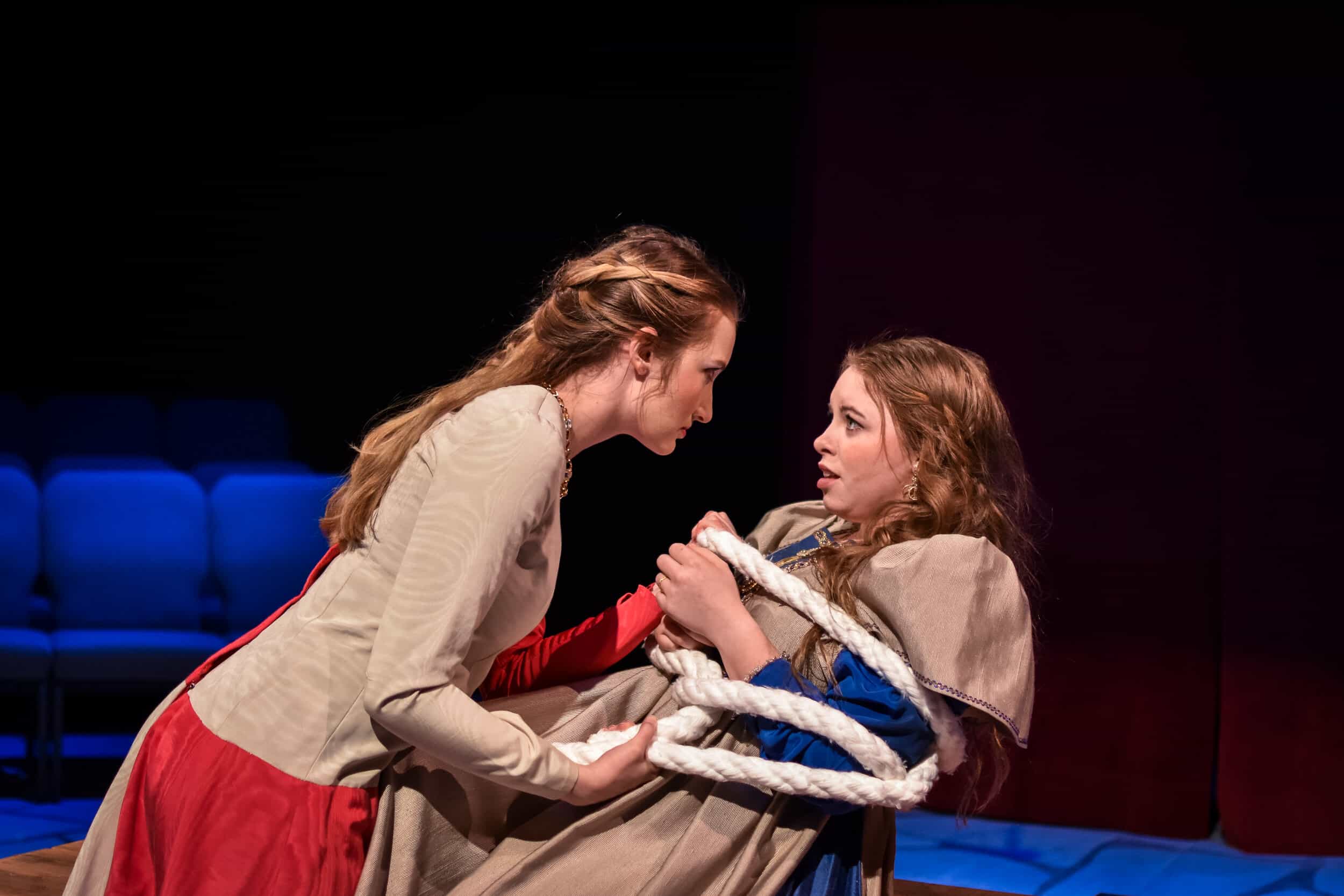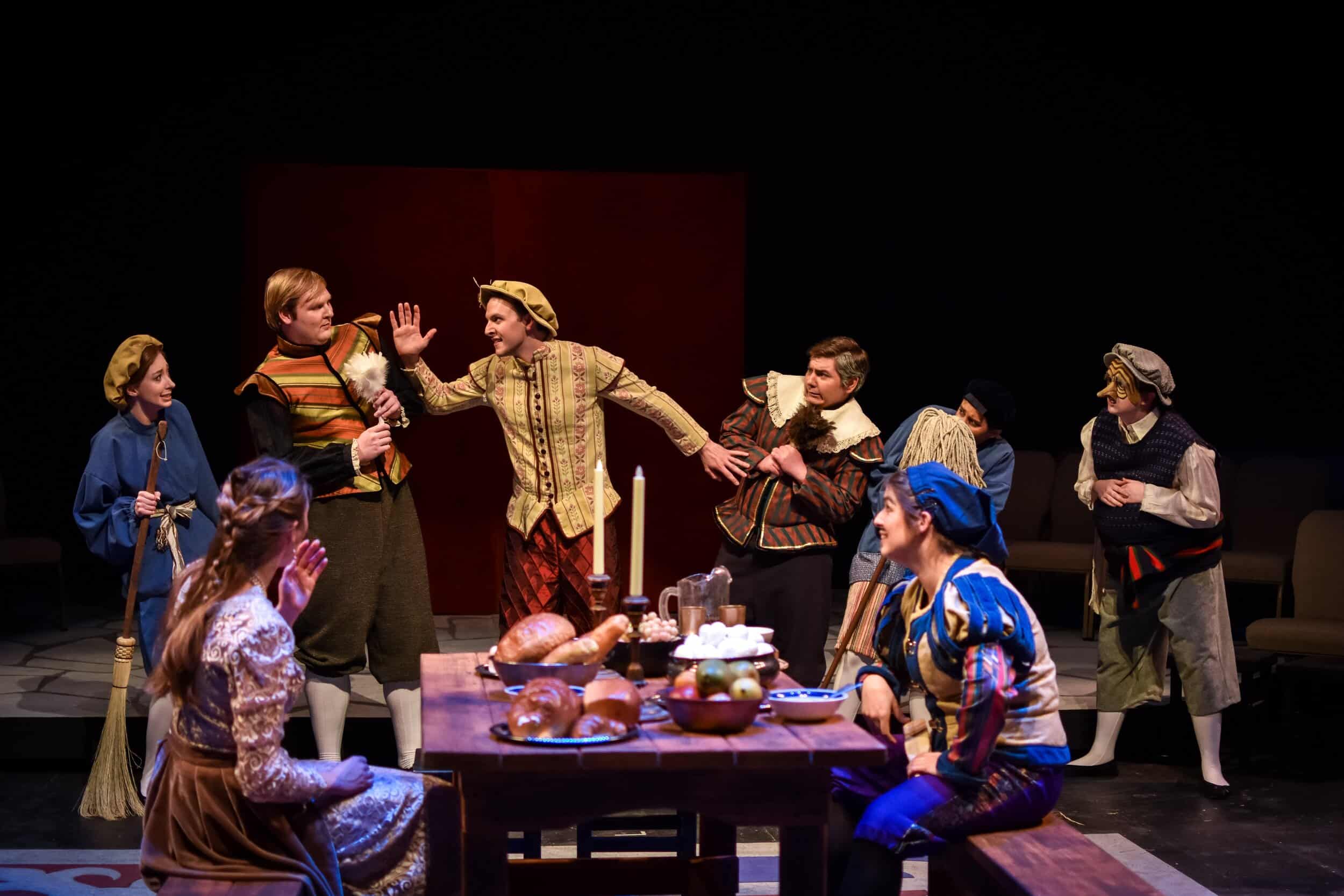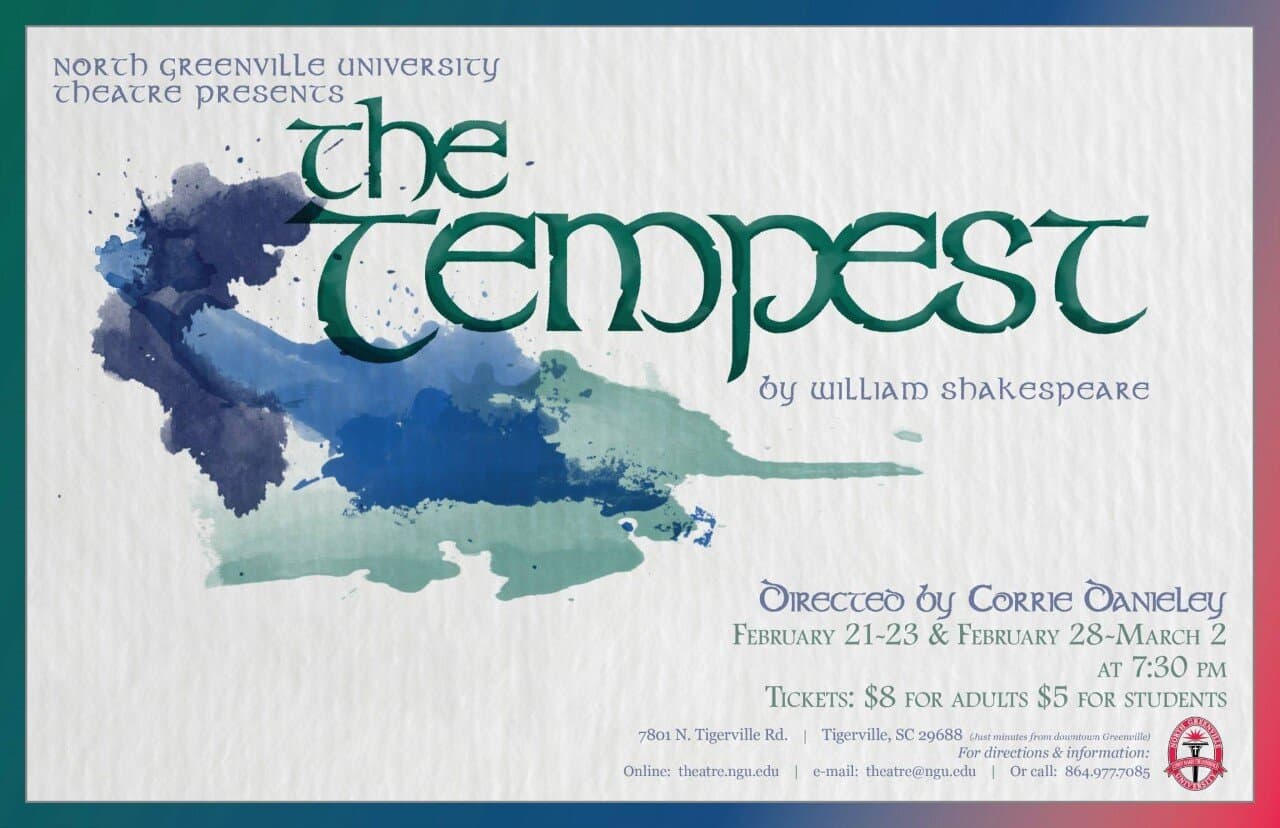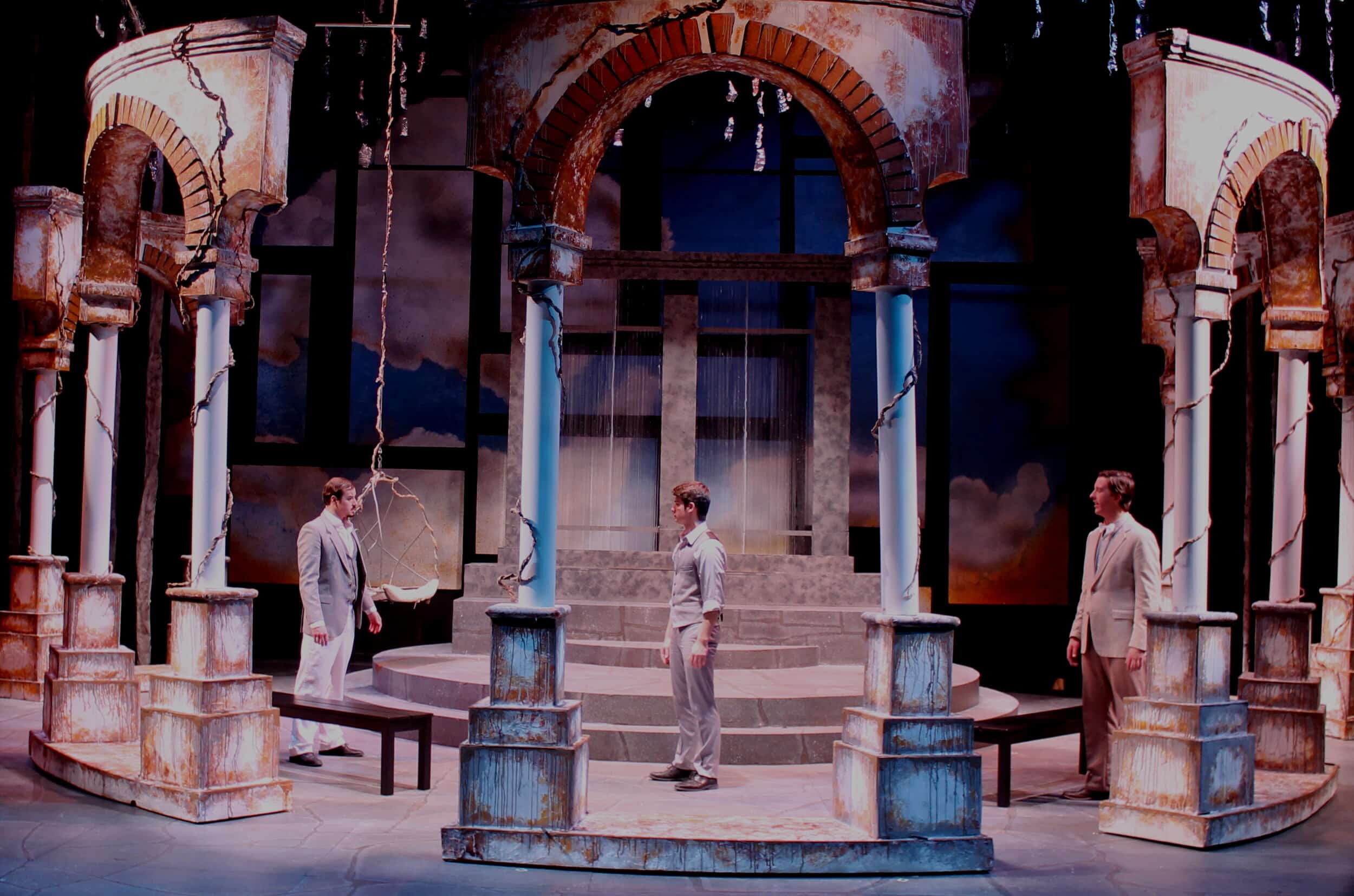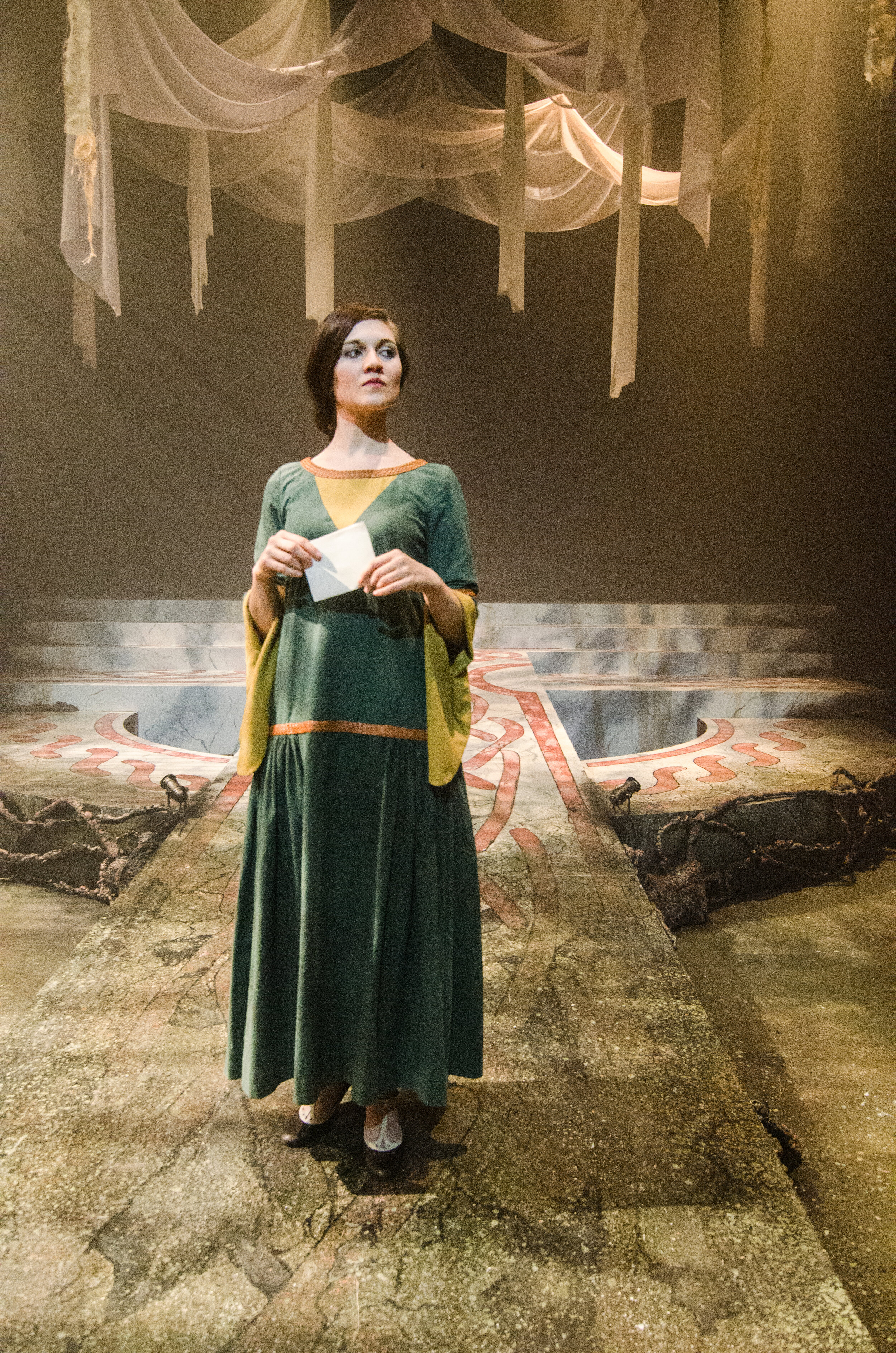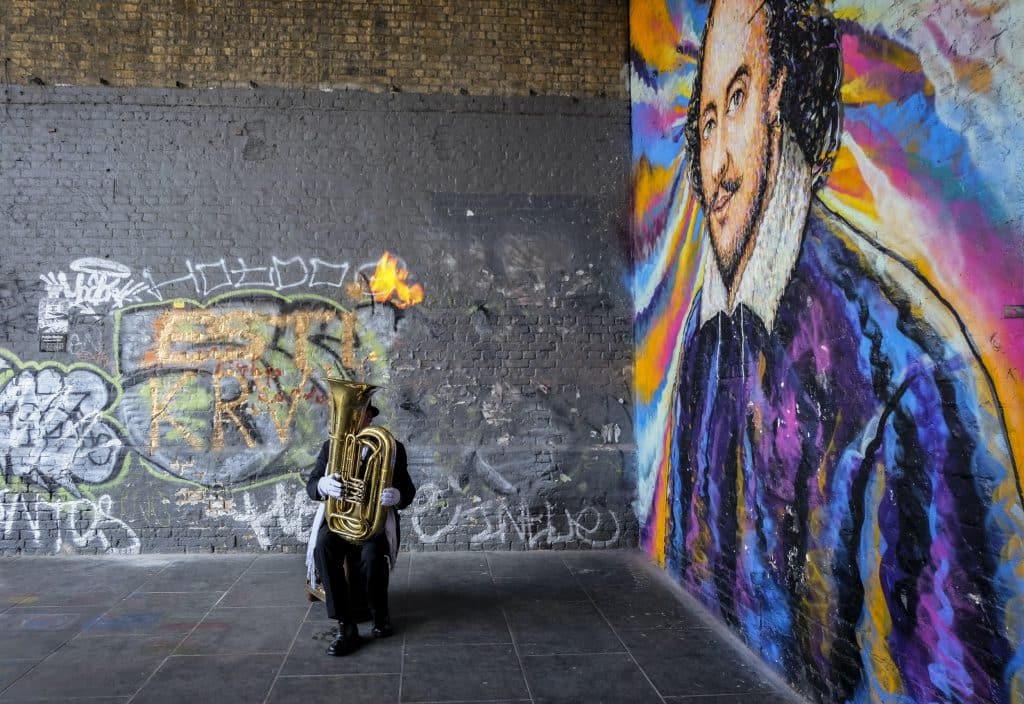
The play … That’s the thing: A look back at Shakespeare at NGU
Samantha Martin, News Editor
It is estimated that Shakespeare himself wrote 37 plays, a mixture of historical, tragic and comedic stories, some of which were performed before Queen Elizabeth I and King James I.
Since 2003, the NGU School of Theatre has performed one of Shakespeare�s works nearly every alternate year. But which stories made the cut for the Billingsley Theatre?
2003: �Love�s Labour’s Lost�
Just when you swear off anything, you face that exact temptation. The same goes for King Ferdinand, Longaville, Maine and Berowne in this Shakespeare play. The three men swear off women, pursuing scholarship instead. But it just so happens that the beautiful Princess of France arrives, along with three beautiful ladies in waiting.
Because of their vow to scholarship, the king and his three servants have the princess and her ladies camp outside of the castle, and there they go to visit. Soon after visiting, the men begin to fall in love with the women.
When all the men begin to realize each other’s feelings they agree that in their studies, they could in fact study love and go to court the women. As the couples come together, the princess gets word that her father has died and she is now queen. The couples part with promises to meet again within a year�s time, and that is where the stories end.
2007 & 2019: �Taming of the Shrew�
Kate torturing her sister, tying her hands, asking which suitor she likes best and teasing her about her dress.
�Taming of the Shrew� – 2019
Hell hath no fury like a woman scorned � or a shrew. Bianca is the younger of Baptista�s daughters. Many suitors wish to have her hand, but Baptista insists that his eldest daughter Kate be married off first.
All of Bianca�s suitors agree that they will work to find a suitor for Kate. Meanwhile, a new man who wishes to have Bianca plots to disguise himself as a tutor and woo the younger sister that way. Some time later, Petruchio comes into town and visits his old friend Hortensio, one of Bianca�s suitors.
Petruchio carrying out his plan as he �tames� the shrew Kate.
�Taming of the Shrew� – 2019
Petruchio tells his friend that he has inherited a house and is now searching for a wife. Hortensio has an idea and begins describing Kate, or rather attempting to trick Petruchio into believing that Kate was kind, beautiful and patient.
He cannot complete the lie however and admits to Petruchio that he was trying to ensure Kate�s betrothal so that he could marry Bianca, but in fact Kate is ill-tempered, mean and rude. Petruchio is not deterred and insists that he can tame the shrew. He tells Hortensio that he will marry Kate and secure her dowry.
Petruchio then goes to Baptista, and in a whirlwind of hilarious antics, marries Kate and whisks her away, all the while wearing her down and showing her what her ill-temper will earn her. Kate quickly learns that in order to live comfortably, she must let go of her shrewish ways and act in a way that is obedient and loving to her new husband.
2009: �Romeo and Juliet�
One of Shakespeare�s most well known and tragic works, �Romeo and Juliet� is the tale of star-crossed lovers. Juliet is a Capulet, and Romeo a Montague. The two families have a rivalry extending back many years, ever since Lord Capulet and Lord Montague had a falling out.
Romeo begins the story pining after fair Rosaline, attending a Capulet ball just to see her. Then, at the ball, Romeo sees Juliet and almost immediately forgets his supposed love for Rosaline. The story goes on with Romeo trying to woo Juliet, who is betrothed to be married to Count Paris.
As Romeo and Juliet fall in love, they make a plan to marry in secret. Friar Laurence, a friend to the Montague family, agrees to marry the pair, hoping it might end the feud between their houses.
Romeo and Juliet are married, but soon after, Romeo is confronted and challenged to a duel by Tybalt, Juliets�s cousin because of his sneaking into the Capulet ball. Tybalt insults Romeo�s honor by calling him a coward, and his Mercutio, Romeo�s friend, jumps to his defense. Tybalt kills Mercutio, and in an act of revenge, Romeo kills Tybalt. Romeo�s life is spared, but he is banished from Verona.
To escape marrying Paris, and to be reunited with Romeo, Juliet fakes her death with a sleeping potion. But news of the act doesn�t reach Romeo until after he hears that she is in fact dead. Romeo goes to her tomb and drinks poison.
Only a short time later, Juliet wakes to see Romeo dead, but without any poison left so she can join him. So she takes up his dagger and stabs herself in the heart, thus ending her life. The death of the pair finally ends the feud between the houses, only too late.
2011: �Twelfth Night�
Twelfth Night is one of Shakespeare’s 17 comedies and focuses on the characters Viola (Cesario), Countess Olivia, Duke Orsino and Sebastian. Viola and Sebastian are twins, separated after their ship wrecks in a storm. Viola disguises herself and goes to work as a page (Cesario) for the Duke of Illyria, hoping that she will be safe in his house while she waits for her brother to be found.
Viola begins to fall in love with the duke while carrying his love messages to Olivia, and Olivia begins to fall in love with �Cesario.� Things get more confusing from there as Sebastian, Viola�s lost twin, comes into Illyria. With much mischief and happy endings all around, this is one of Shakespeare�s happier stories.
2013: �The Tempest�
The flier for NGU�s production of �The Tempest� – 2013.
Another play, another shipwreck. Beginning in this story, we meet King Alonso, his brother Sebastian and his son Ferdinand, Gonzalo the servant and Antonio, a duke.
They are caught in a raging storm and wreck on a mysterious and magical island. We then learn that the island is inhabited by two people, a magician, Prospero, and his daughter Miranda.
Miranda sees and frets over the shipwreck, and then she learns from her father why it has happened. Prospero, working together with a spirit named Ariel, caused the shipwreck to right the wrongs of the past. Prospero once was a duke, and then his brother Antonio and the king�s brother Sebastian convinced the king to cast out Prospero and his daughter. The only salvation Prospero and Miranda had was the kindness of Gonzalo, the king’s servant.
Through different magic tricks, Prospero reveals the true nature of Sebastian and Antonio, convinces the King to return his dukedom and announces the sudden engagement of Ferdinand and Miranda, ending happily for all.
2015: �Much Ado About Nothing�
Lenato and his elderly brother Antonio live together with their daughters, Hero and Beatrice. When Lenato�s friend Don Pedro comes home from war, he brings along Claudio, Benedick and his brother Don John. Claudio and Benedick soon begin to fall in love with Beatrice and Hero, though Beatrice won�t admit it. Claudio soon proposes to Benedick.
The plot against Hero.
�Much Ado About Nothing� – 2015
John is unhappy that those around him are falling in love, so he convinces some servants to have relations with Hero�s nurse, and then convinces Claudio that it was Hero herself being unfaithful.
He goes to their wedding and abandons her at the altar, accusing her of lechery. To protect her honor, Hero is sent away and said to have died from grief.
When the servants responsible for Hero�s �death� are caught bragging about their wickedness, they are arrested. Claudio is overcome with grief and begs for a way to atone for his guilt after accusing Hero of such vileness. Lenato sets a wedding for Claudius and another of his �nieces,� but it is really Hero in disguise. Beatrice finally succumbs to Benedick, and the two couples have a joyous double wedding.
2017: �Macbeth�
Napoleon said, �Great ambition is the passion of a great character.�
One can only wonder if he thought this about Macbeth. There�s a reason this name is cursed in the theatre. It’s a bloody tragedy in which the titular character learns that he is to become king. Rather than reveling in the great honor he had already received at becoming Thane of Cawdor, Macbeth allowed his wife to bully him into chasing greater and greater things.
In the beginning, Macbeth encounters three witches who give him a prophecy, revealing before he knows that he will become Thane of Cawdor and one day, king. Lady Macbeth on hearing this pushes Macbeth to make this come true sooner, driving him to kill King Duncan while he stays at their home and then framing his servants.
Duncan�s sons flee, fearing for their lives, which puts Macbeth on the throne. Another part of the original prophecy is that Banquo�s line, not Macbeth�s, will produce kings. To protect his newfound power, Macbeth tries to kill not only his friend, but his friend�s son, who escapes. Banquo�s ghost then begins to haunt Macbeth, driving him mad.
Lady Macbeth contemplating her lord�s letter.
�Macbeth� – 2017
Macduff, another thane, has become wary of Macbeth and suspects him of killing both Duncan and Banquo. He follows Duncan�s son to London and urges him to return and reclaim the throne.
During Macduff�s travels, Macbeth returns to the witches asking how he can ensure his power remains. The witches share with him two warnings that he finds impossible — he will die at the hands of a man not by woman born, and he will fall when the woods of Birnam move to Dunsinane. Macbeth for the most part ignores the witches but kills Macduff�s family further spurning Macduff to battle.
Duncan�s son and Macduff gather forces and move on Dunsinane. They cut down the woods of Birnam and move forward with the trees as battering rams to enter the castle. In the midst of battle, Macbeth learns that his wife has succumbed to guilt and killed herself.
As the story comes to an end, Macduff finally confronts Macbeth, but Macbeth still holds an air of arrogance because he believes that Macduff is a man like any other, born of woman. In a passionate exclamation, Macduff relieves him of this notion, describing that he was not born of a woman, as his mother died before childbirth. Rather, he was cut from her womb.
The story ends with Macduff restoring the kingship to Duncan�s line by tossing Macbeth�s head before Duncan�s son.
2021: �Hamlet�
The play opens with young Hamlet mourning her father�s death and stewing in anger that her mother has so quickly married her uncle. Soon into the story, we learn that soldiers at the castle are seeing the ghost of Hamlet�s father haunting the castle. Hamlet is brought to witness this event and soon learns that Claudius, her uncle, killed her father to take the kingdom.
The rest of the play is a thin line between revenge and suicide, as Hamlet�s mind splits, and she begins to give way to Ophelia, her dark side in the mirror. Ophelia seems to be a representation of death, marking her hands in blood with Hamlet in the real world writing �Adieu� in blood on the mirror.
Hamlet and Horatio in the graveyard reminiscing over Yorik � the former fool for Hamlet�s castle.
Hamlet – 2021
The bloodshed begins as she kills Polonius, who is then marked with a bloody handprint by Ophelia. Eventually, we see the death of Ophelia as the final break in Hamlet�s psyche and the driving force which triggers the bloodshed at the end of the play.
Hamlet then goes to battle with Laertes, Polonius� son. Claudius has plotted to kill Hamlet with the very same poison used on her father and also plots with Laertes to kill her with poison on his blade.
The play comes to a gruesome end as Gertrude, Hamlet�s mother, drinks the poison from Claudius. Laertes falls victim to his own blade, but not before cutting Hamlet. Hamlet then avenges her father�s death by stabbing Claudius with the poisonous blade before succumbing to the poison herself.
Ophelia in a gruesome dance moves about the stage in a twisted dance, marking the dead with a bloody handprint. In a darker twist, Ophelia, risen from the dead, begins to manipulate the bodies of the fallen, further establishing her control in death as a sort of puppet master.
